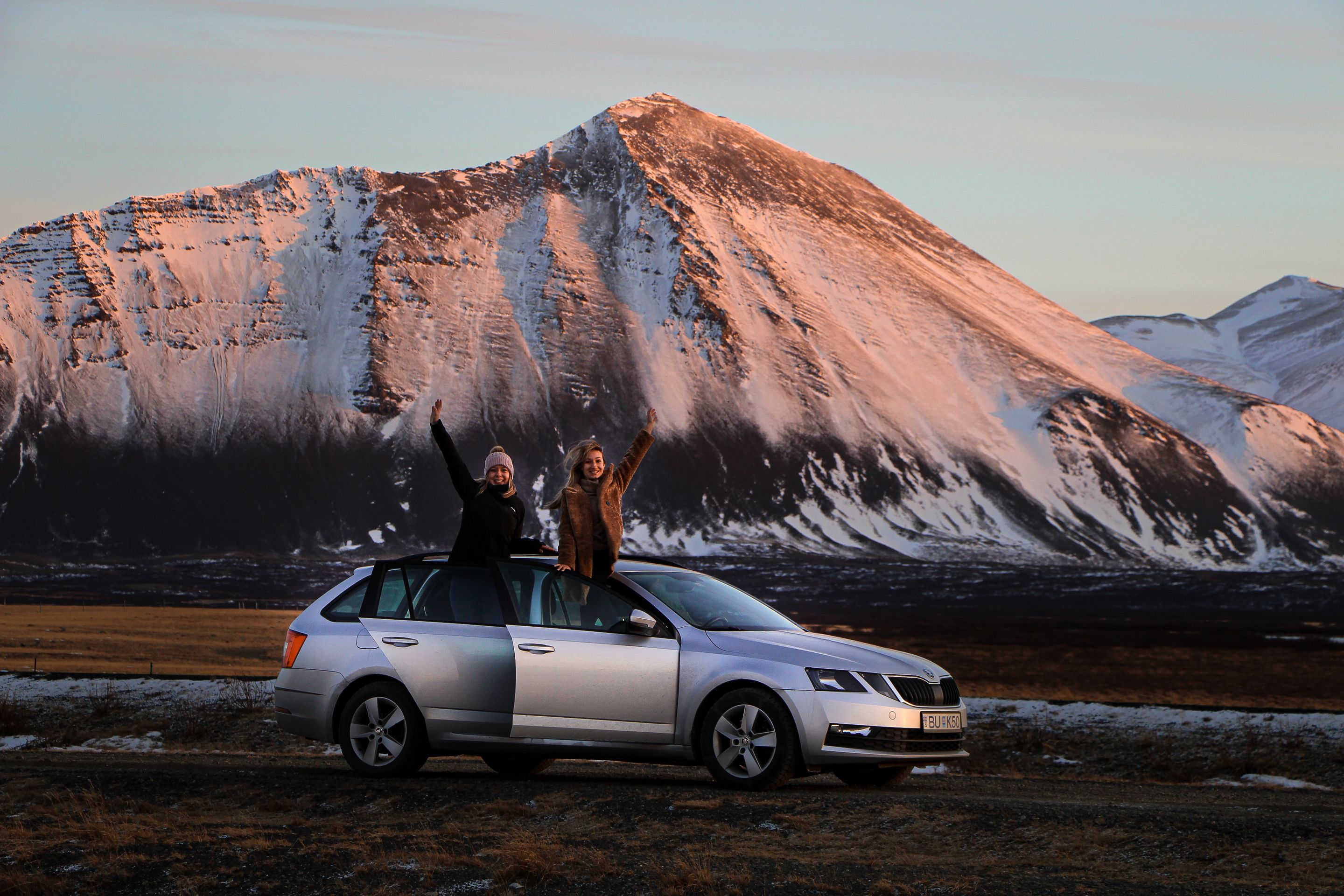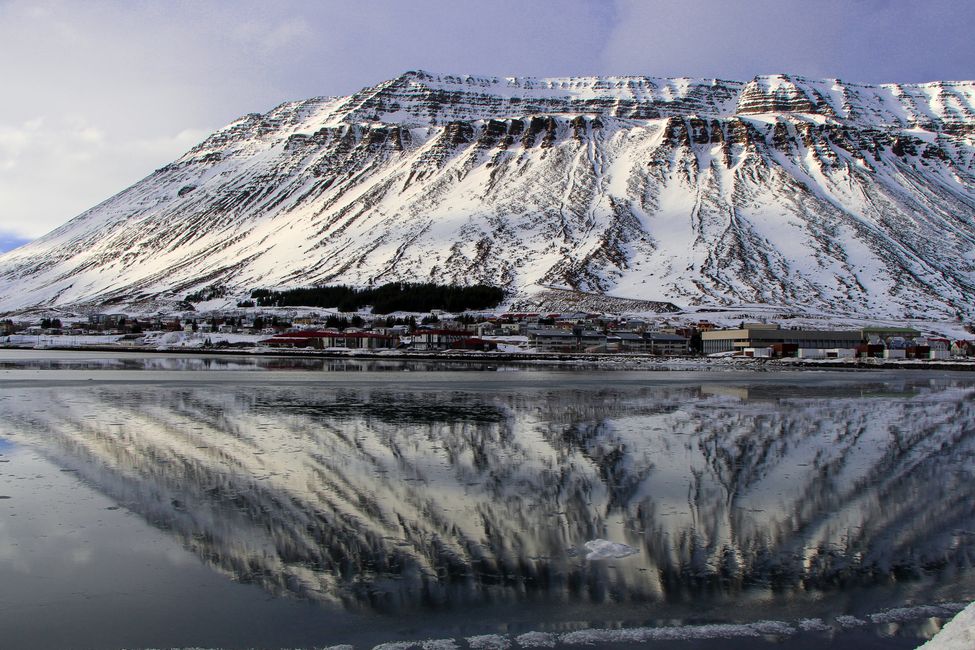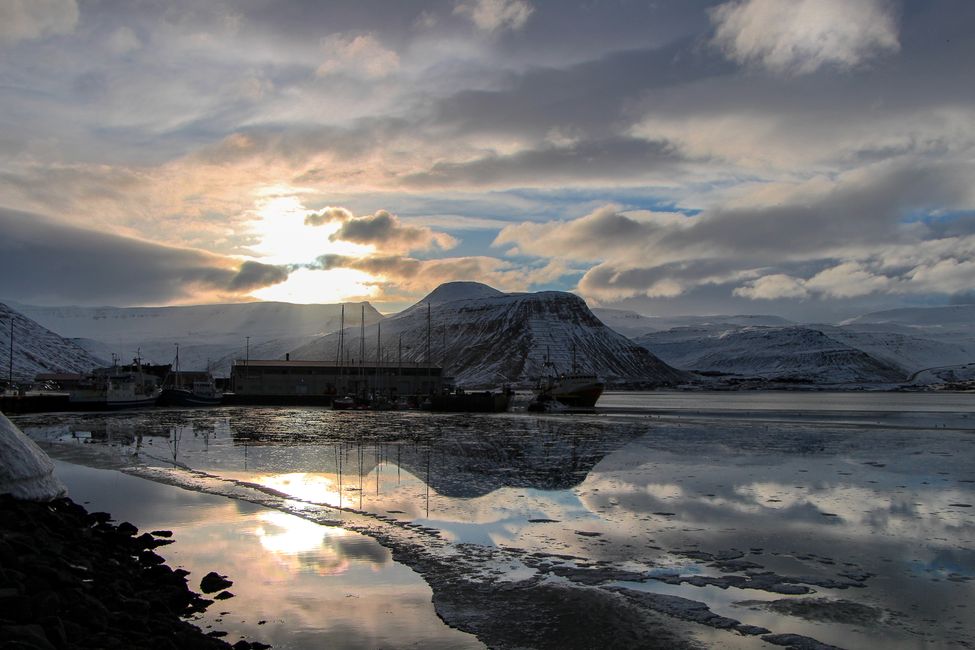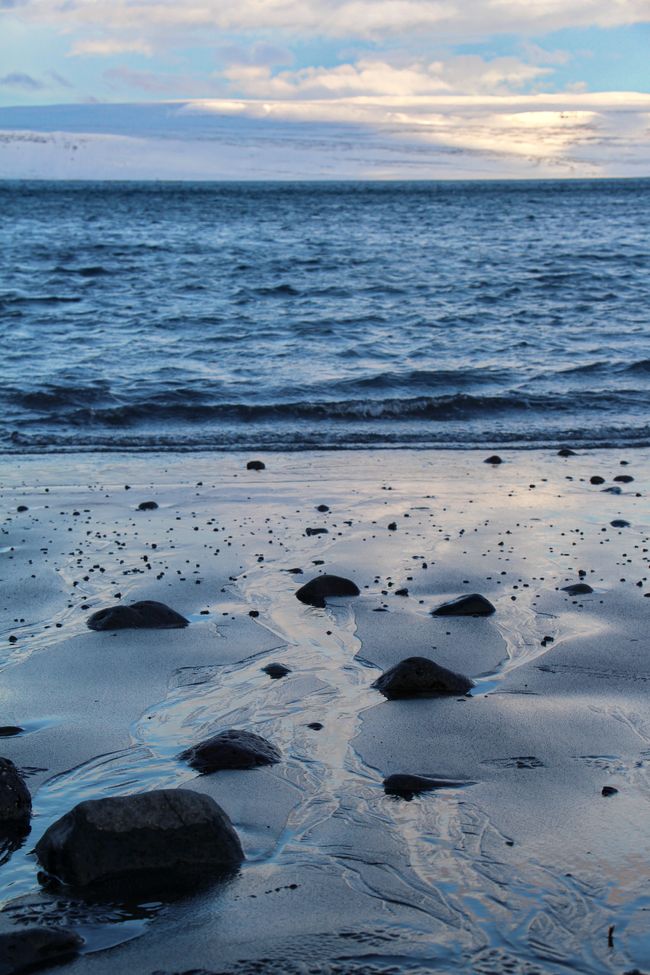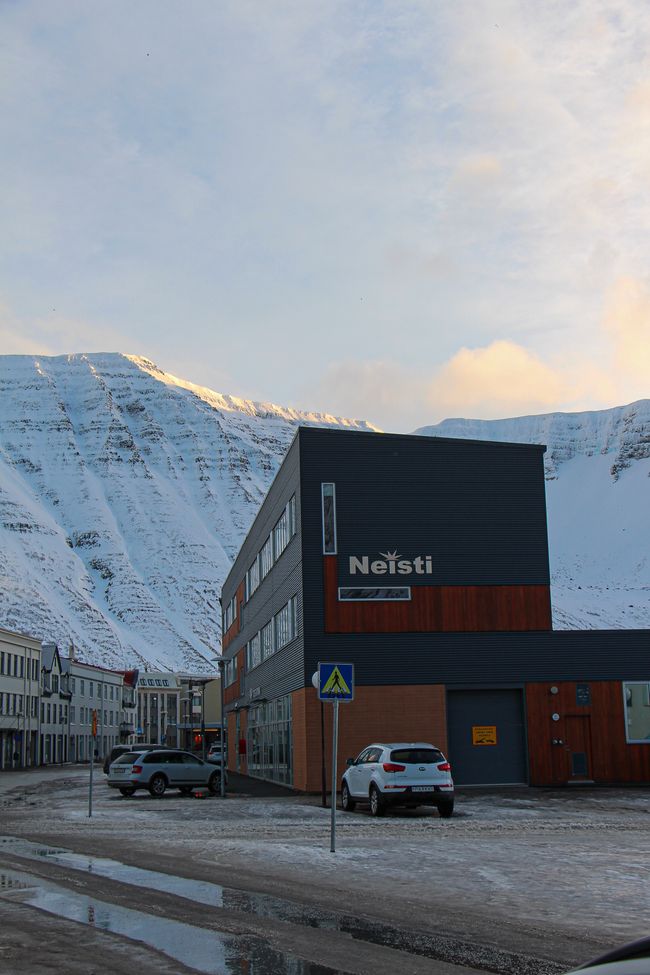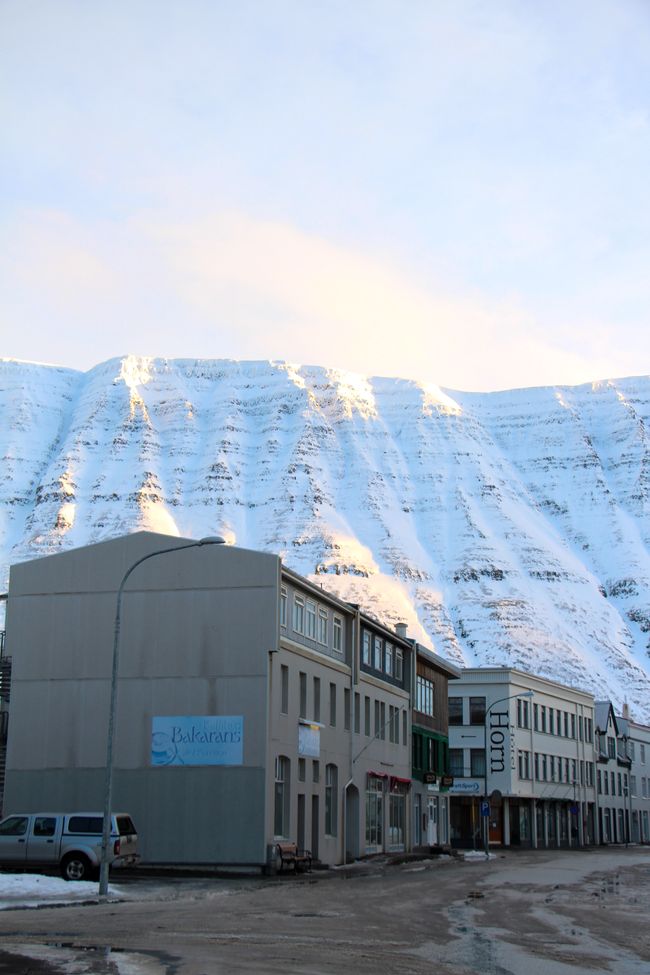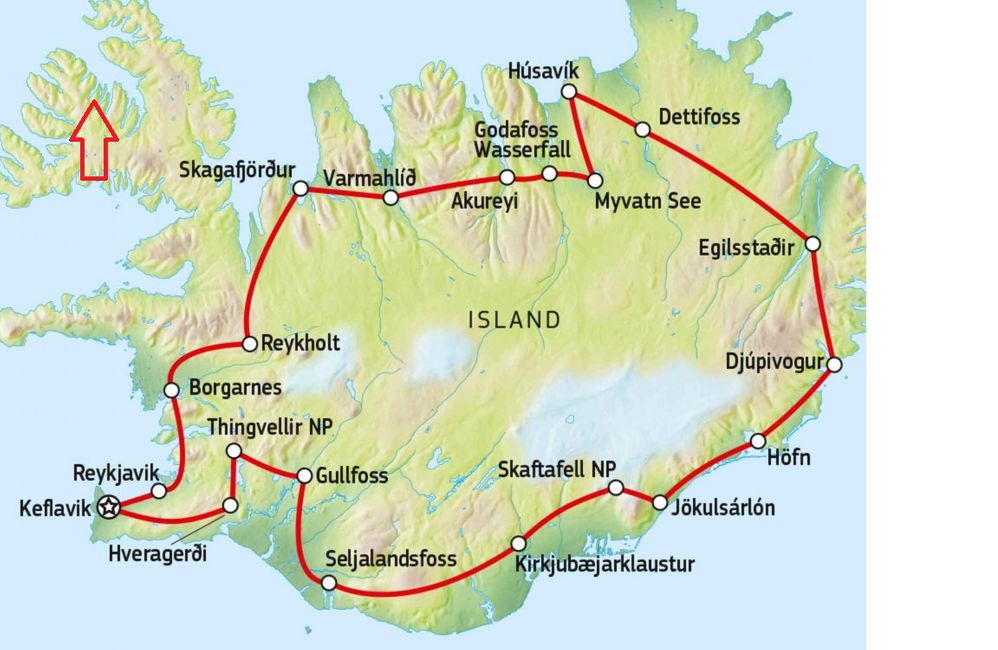The 'City' of Isafjörður
प्रकाशित: 19.02.2021
समाचारपत्रको सदस्यता लिनुहोस्
We live here in a modern furnished apartment in the center of Isafjörður (we haven't mastered the correct pronunciation yet, but we are diligently practicing - the rolling 'r' and the ð are really a challenge). Isafjörður is located between the two mountain slopes Eyrarfjall (up to 731 m) and Kirkjubólsfjall (up to 832 m).
The city is the economic and administrative center of the Westfjords and is also supported by a sandbank (Icelandic: eyri) that is constantly being deposited to create new land. If someone had told us a year ago that we would soon be living on a sandbank for 3 months, we would probably have thought of the Maldives or Bora Bora...almost =D
The peninsula now reaches almost from one shore of the fjord to the other.
Some may now think that we live in a well-populated corner of Iceland - as already mentioned, Isafjörður is a city - but with less than 3,000 inhabitants, it is more like a village/'Kaff'. But here you have everything your Swabian heart desires (except Maultaschen and prices suitable for Swabians...they are really missing here): two supermarkets, the 'new Netto' and the 'cheap Bonus', a swimming pool, an airport and a harbor for ships, a hospital, a pharmacy, bookstores, various shops, hairdressers, a campsite, a ski resort, a cross-country skiing area, an elementary school and the university where we work. A bar and pub tour is also possible here (except for the resulting financial ruin), there are about 5 restaurants/bars, so you almost feel like in a city.
Considering the location, it is understandable that it has everything here, because the Westfjords are quite far away from the touristically well-visited 'Ring Road' (see picture), which runs once around the island. On the drive here, there were often no houses to be seen far and wide, it's no problem to go for 2 hours without meeting a soul. Often the road to the Westfjords is simply closed due to bad weather conditions. For example, if we had flown on January 28th instead of January 31st, we would have had to stay in Reykjavik because Route 60 to Isafjörður was closed until the weekend.
To illustrate again: Germany has a population density of 233 inhabitants per km², while Iceland only has 3.5 inhabitants per km². This means that in Germany, a person would have about 0.6 football fields available, while an inhabitant of Iceland would have about 40 football fields for himself. But he would have to share these 40 football fields with sheep and puffins. Because beware! Fun Fact: There are more sheep (460,000) and puffins (4 million) than people (330,000).
By the way: The largest city and at the same time the capital of Iceland is Reykjavik, where more than 60% of the population lives. It is followed by Kopavogur, Hafnarfjördur and Akureyri.
Exactly this fact makes the nature here even more beautiful. You can enjoy the beautiful nature to the fullest without having to fight with other tourists for the best photo spots. For those of you who have been to Bali: here you will find the exact opposite of that.
Since we are already talking about opposites - the weather here is currently the opposite of Germany (18°C, sunny): snow, rain, sleet, fog, wind and 'pleasant' -3°C to 3°C.
Furthermore, it is still pretty dark in the morning - the sun rises here currently (if the weather conditions are good) at half past 9 and in the evening it is one hour longer 'bright' than at home. This does not make getting up - especially for Franzi Schmidke - any easier. But in the next 4-6 weeks, everything will be different, we can hardly wait for the days to get longer.
समाचारपत्रको सदस्यता लिनुहोस्
जवाफ (2)
H.
Wieder mal was gelernt 😍. Macht weiter so, wir verfolgen Euren Blog voller Spannung 😘Dorothea
Diese unaussprechlichen Namen....richtig zu schreiben .... wahnsinnig toll, das will ich mal hören, wie Ihr isländisch sprechen könnt! 😉